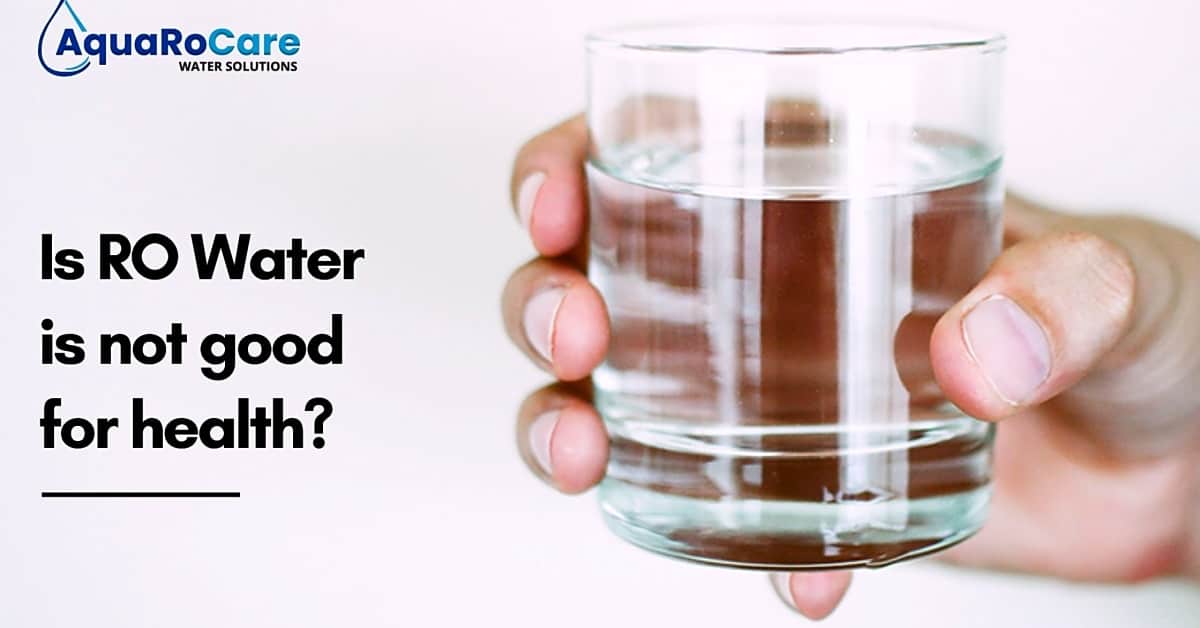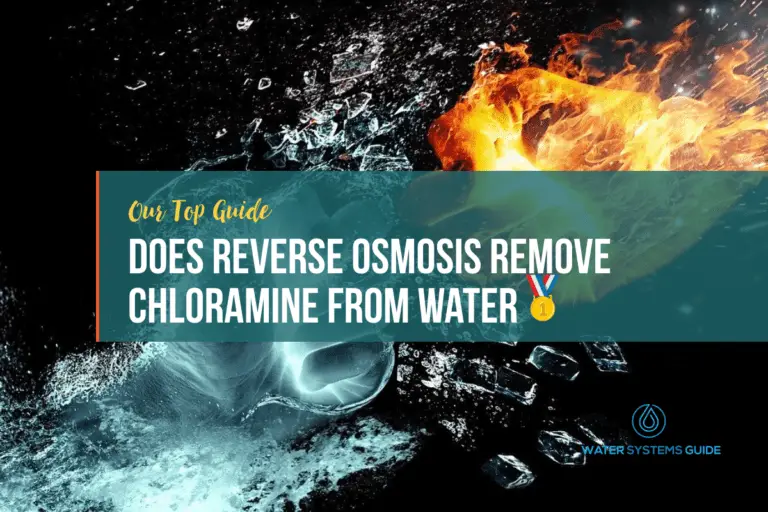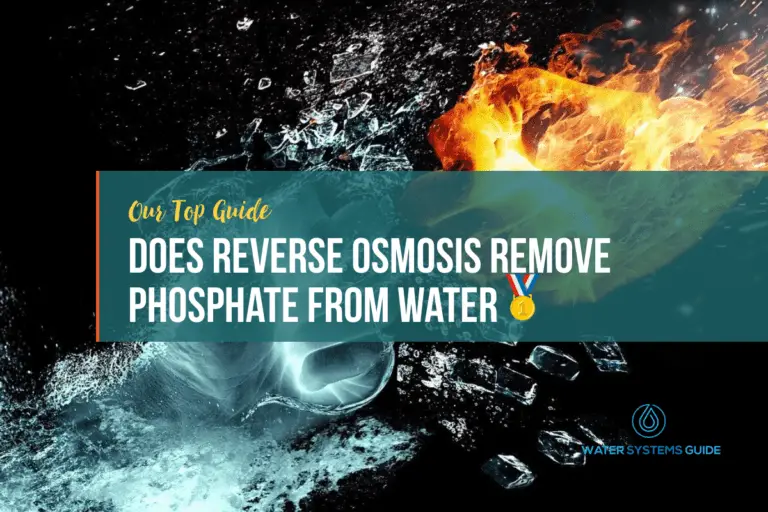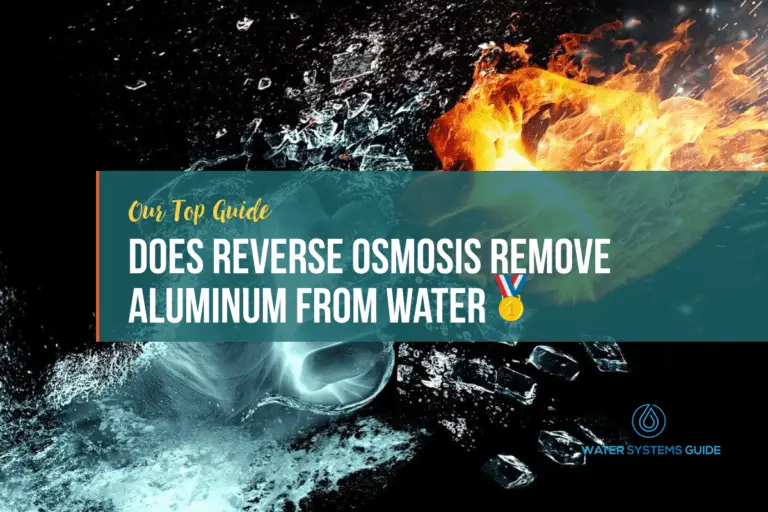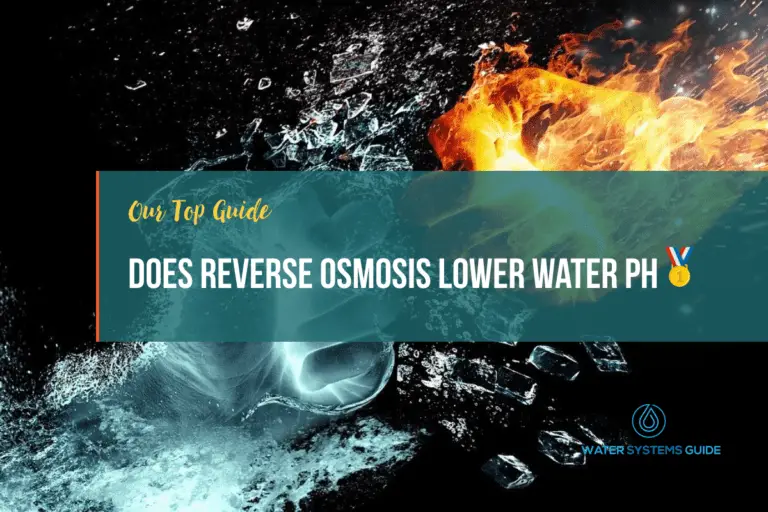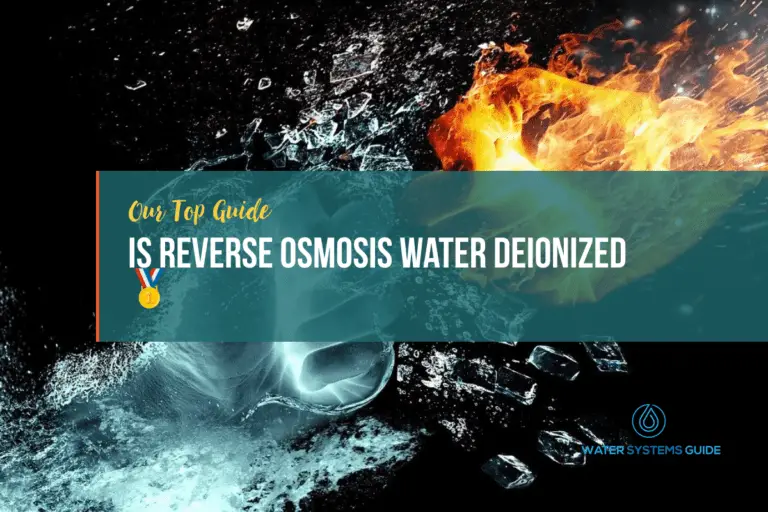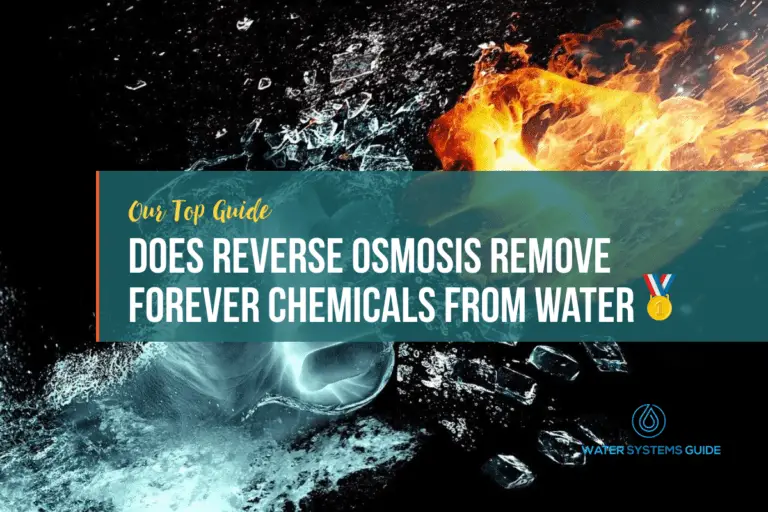Why reverse osmosis water is bad for you?
According to the World Health Organisation, low mineral content (TDS) drinking water produced by reverse osmosis or distillation is not suitable for long-term human consumption and may even have negative effects on the health of those who drink it. It has been scientifically proven that drinking reverse osmosis water damages the body more severely and more quickly than most of the contaminants found in tap water. On the other hand, when mineralised water is used for cooking, the loss of these elements is much less, and in some cases even higher levels of calcium have been found in food as a result of cooking. Reverse osmosis water is not necessarily harmful, although the studies on this are inconclusive.
According to experts, a healthy adult male should consume about 13 cups (three litres) of water (or water-based liquid) per day and healthy adult females should consume nine cups (2.2 litres). Although reverse osmosis water is considered safe drinking water and you can get all the minerals that the reverse osmosis process removes through a balanced diet, you should remineralise your reverse osmosis water for the sake of your health or drinking pleasure. The World Health Organisation warns against RO water. The World Health Organisation warns against RO water.
For example, if you think you will drink less in the long term if it tastes less appealing, it makes sense from a health perspective to make mineralised water for your hydration. There is virtually no hard evidence that reverse osmosis water is harmful to health. Reverse osmosis water is not only healthier for cooking – it also gives your food a better taste. Reverse osmosis water, which does not contain enough minerals, leaches minerals from the body when consumed.
According to a New York Times investigation, American tap water contributes to the erosion of tooth enamel and skin rashes. A reverse osmosis system at the kitchen sink can mitigate the adverse effects of a whole-house softening system. Fewer minerals being absorbed and more minerals being excreted lead to serious negative side effects and major health problems. Alkaline water usually tastes better because it contains certain minerals and vitamins that raise the pH level.
Reverse osmosis systems make your water even safer. If you eat a balanced diet and do not suffer from illnesses such as severe heartburn or gastrointestinal ulcers, drinking reverse osmosis water will not affect your overall health and well-being. American landfills are overflowing with plastic water bottles, and environmentally conscious people are constantly on the lookout for a problem. The same study found that toxic chemicals like lead and arsenic are prevalent in tap water.
Demineralised water is deficient in these particular vitamins and minerals and can affect your health and cause problems related to your metabolism and kidney function if you don’t eat from an alternative source. In the meantime, consider it safe for drinking, cooking, showering and more. This means that minerals and vitamins taken in with food will be excreted in the urine. I suggest that you are aware of the issues related to the WHO medical studies, but the side effects of RO water, including reduced fluid intake and mineral intake, can be managed with mindfulness.
The lack of minerals can also have a negative impact on taste for many people. When reverse osmosis water is used for cooking, it has been found that there is significant loss of all essential elements in food (vegetables, meat, grains).
Is reverse osmosis water healthy for you?
He has 37 years of experience in the field of treating domestic, commercial and industrial water as well as highly purified and sterile water. So if you want the benefits of reverse osmosis water, but still don’t want to miss out on the minerals, you should know that there is a technology that allows you to have both. Of concern is the fact that consuming reverse osmosis water even for a period of just a few months can lead to serious side effects. In these countries, many consumers have chosen to go beyond this level of treatment for their personal drinking water supply.
While the process is very effective at removing harmful contaminants, it also removes the healthy minerals from the water. A reverse osmosis system can provide water that is completely safe to drink because the dangerous contaminants are filtered out during the RO process. The WHO warns that consuming reverse osmosis (RO) water even for a few months can cause serious side effects. Unless you suffer from conditions such as acid reflux or gastrointestinal ulcers, which are best treated by reducing acidic foods and drinks, there is no scientifically proven evidence that reverse osmosis water is bad for your health.
If you’ve looked into water filtration solutions for your home, you’ll know that reverse osmosis is one of the most popular options. Conclusion Water quality around the world continues to deteriorate due to increasing pollution of natural water sources. In a scientific study investigating whether minerals ingested from food can compensate for the lack of minerals in reverse osmosis water, scientists concluded that reduced mineral intake from water cannot be compensated for by diet. This US-made filter not only adds minerals back into the water, but also increases pH and fluid intake by lowering the ORP (oxidation-reduction potential) of the water.
For example, in a typical POU reverse osmosis system (which uses 25 per cent recovery), the salt concentration in the wastewater is only 33 per cent higher than in the feed water. According to the World Health Organisation, low mineral content (TDS) drinking water produced by reverse osmosis or distillation is not suitable for long-term human consumption and may even have adverse health effects on consumers. In industrialised countries, virtually all public water supplies are treated, at least to combat pathogenic organisms. This involves filtering out pollutants through a membrane filter that does not allow solids and conspicuous microbes to pass through.
There is virtually no tested evidence that reverse osmosis water is harmful to health. In the case of a borderline deficiency of a particular element, even the relatively low intake of the element with drinking water may have a relevant protective function. While it is important to consider the arguments of the experts, if you drink fresh reverse osmosis water that has not had time to potentially accumulate contaminants, and if you combine your drinking habits with a healthy diet, you have nothing to worry about. These contaminants eventually make their way into the drinking water supply, both surface water and aquifers.
The reverse osmosis system filters about 180 litres of water per day, but more than 99% is reabsorbed and only 1.0-1.5 litres is excreted in urine.
Is reverse osmosis water toxic?
Read on to better understand what reverse osmosis really is, how it affects water quality and how it impacts your body and health. A popular trend since the negative effects of consuming reverse osmosis water have been scientifically confirmed is the practice of adding minerals back into reverse osmosis water. However, the truth is that reverse osmosis water that has not been remineralised does not contain vital minerals, and this can be problematic in the long run. The only disadvantages are minor: reverse osmosis systems remove some good minerals from the water as well as impurities.
We recommend keeping your reverse osmosis system to thoroughly clean your water, and then hooking up a Tyent water ioniser so you have healthy antioxidants and minerals in your water too. In the meantime, all indications are that reverse osmosis water is less hydrating than untreated water. Reverse osmosis water may be a stopgap solution for short-term consumption, but it is not the healthiest water in the long run. After that, the water goes through a fourth and sometimes a fifth filter to catch any impurities or chemicals.
When the osmolality of the fluid being filtered by the kidney is lower than normal (lower solute concentration, e.g. low TDS water), nervous and hormonal feedback mechanisms cause the kidney to excrete more water than normal, keeping the ion concentration of the fluid at normal levels. If you want to get rid of your reverse osmosis system altogether, then a Tyent water ioniser is the best choice. If you eat a balanced diet and do not suffer from conditions such as severe acid reflux or gastrointestinal ulcers, drinking reverse osmosis water will not affect your overall health and well-being. It is also important to add molecular hydrogen, which you can get with a Tyent water ioniser or with Tyent’s new hybrid device.
Most people would not find that their health is affected if they drink RO water over a limited period of time. There is virtually no tested evidence that reverse osmosis water is harmful to health. Therefore, the government should take serious steps to ensure that local authorities provide clean drinking water to the population.
Is reverse osmosis water better than normal water?
All municipal water supplies must meet the requirements of the US EPA Safe Drinking Water Act. However, the distribution system, which is full of biofilms and undoubtedly subject to deterioration and possible leaks, may have compromised the quality of the water by the time it reaches the home. At a time when several cities in India are either facing or on the verge of a water crisis, it is important that every drop of water is saved or reused. It neither removes chlorine nor softens the water, which is why activated carbon filters are almost always needed in combination with RO. Culligan water filtration systems have improved water quality for thousands of families worldwide.
These systems are typically installed under the sink and can solve a wider range of water problems than simple in-line filters (and water filter cans). Cartwright has received both the Award of Merit and the Lifetime Member Award from the Water Quality Association and is a technical advisor to the Canadian Water Quality Association. Reverse osmosis systems remove contaminants such as nitrates, sulphates, fluorides, arsenic and more from water. The US Army uses portable reverse osmosis systems for expeditions to provide safe, low TDS water to their personnel in the field.
If you get your water from a regulated public water supply system, you should still treat your drinking water. Generally, claims about what RO removes are based on industrial high-pressure RO filters, so cheaper home filters may not be as effective. Before buying a reverse osmosis machine or other water treatment system, find out about the quality of your tap water and what is needed to make it safe and palatable. Reverse osmosis does remove minerals from drinking water, but it is very unlikely that these minerals will have any lasting effects on your health.
Water bathes cells, cushions the brain, lubricates joints and tissues, and regulates body temperature and the body’s biochemical reactions. So how can water be dead? That is the question, isn’t it? Last time we checked, water was not technically alive by conventional standards. After it leaves the treatment plants, drinking water can be affected by burst pipes, corrosion or even the presence of lead in supply pipes and household fixtures. Reverse osmosis not only helps improve the safety of water by removing potentially harmful contaminants from water (such as lead, which can make us sick), but it also improves the taste of water, which can have a number of health benefits.
Is drinking reverse osmosis water healthy?
Understanding water quality indicators is critical to the health of you and your family. Fortunately, there is no reason to rely solely on bottled water or reverse osmosis for great-tasting water that is free of harmful contaminants. So what should you do? Should you forgo a reverse osmosis system and risk drinking unwanted impurities to ensure your body gets enough minerals? Places like Flint, Michigan, have proven that this is a risky proposition. Well, technically deionised water systems extract more water, but DI water is not something you want in your house as drinking water.
She was just talking about how I absolutely need it and should definitely use it for drinking and cooking. It’s good to know that you have a water filtration system that works for you and your home. These extra steps don’t exist with reverse osmosis, which is why this purification method is one of the best ways to filter water. We try to point out that short-term consumption of reverse osmosis (RO) water over a period of 4 to 6 weeks is often necessary and in some cases life-saving.
With reverse osmosis, water is forced through each stage of filtration at high pressure, greatly reducing sediment, environmental contaminants, chlorine and lead before it enters the reverse osmosis chamber. If water isn’t all you ever consume, then such a tiny amount of minerals lost when drinking RO water isn’t really worth getting upset about. In fact, most people would not find that their health is affected by drinking RO water for a limited period of time. Access to fresh water that tastes fresh and delicious is important for everyone, but especially for those regions where urban water supplies are not as healthy.
In addition to the health risks, the report also points out another important problem with demineralised water: it attacks metal pipes, containers and tanks, posing a risk of contamination. In addition, RO water that has not been remineralised does not contain essential minerals, which can be problematic in the long term, which is why we recommend drinking it only for a short period of about four to six weeks. The Czech and Slovak populations that used reverse osmosis water experienced various health complaints within a few weeks or months, suggesting an acute magnesium (and possibly calcium) deficiency. So you have immediate access to water that has been filtered from your tap by a reverse osmosis system.
Even if your body is not affected by the salt, drinking distilled water from a bottle leads to more plastic waste in the environment. Similar to other filtered water solutions, reverse osmosis water also offers benefits by removing components such as lead, bacteria and viruses that may be present at the original source. Where tap water comes from can sometimes happen through older piping systems and less regulated water treatment, leading to impurities in the water. A recent eco-epidemiological study of 13,723 girls and 16,161 boys found that mineral-poor water can delay height growth and increase the likelihood of tooth decay, among other problems.
In municipal reverse osmosis systems, water is likely to be remineralised to stabilise it before use. Over the past 10-15 years, reverse osmosis systems combined with activated carbon have been marketed as the only solution for household drinking water. So, regardless of the claims made by reverse osmosis suppliers, drinking water treated with reverse osmosis technology is definitely harmful to health.
Is drinking reverse osmosis water harmful to you?
Drinking enough water can reduce allergy symptoms and make you feel more alert and energetic. To get a similar result to reverse osmosis, you could use a still to make distilled water. Recent epidemiological studies suggest that reverse osmosis water may be a risk factor for hypertension and coronary heart disease, gastric and duodenal ulcers, chronic gastritis, goitre, pregnancy complications and various complications in newborns and infants, including jaundice, anaemia, bone fractures and growth retardation. You may have read that reverse osmosis water is acidic or that the process of reverse osmosis strips healthy minerals from the water.
The fact is that the US Navy has been using distilled water with less than 3 ppm TDS aboard naval vessels for more than 50 years. It is virtually impossible to recreate natural water with all its minerals and trace elements from water treated by reverse osmosis. Although many supporters of alkaline water claim that alkaline water can support your health, the Mayo Clinic notes that there is simply not enough research to verify these claims. So you can see that the effectiveness of reverse osmosis systems is as much to their detriment as it is to their advantage.
In the long run, ingesting these chemicals through drinking water is certainly not good for your health.
Is reverse osmosis water better to drink?
If you feel you need to improve the taste of the water, then reverse osmosis water can be improved with pre-dissolved minerals. On the other hand, the World Health Organisation has published a study stating that the more than 90 per cent of minerals removed by reverse osmosis may have long-term health risks. In reality, these claims are misleading and paint a picture of reverse osmosis systems that is simply not true. Minerals in drinking water are needed It is claimed that minerals in water are absorbed into the bloodstream faster than from food.
Pollutants are filtered out by a membrane filter that does not allow solids and noticeable microbes to pass through. Drinking reverse osmosis water can also eliminate the risk of brain damage and anaemia, especially in children. Reverse osmosis removes lead from water and frees people from many diseases such as high blood pressure, nerve damage and low fertility. One of the advantages of a reverse osmosis filter is that it can be connected directly to the tap and provide clean drinking water when needed.
However, if you need water with a higher pH, there are reverse osmosis systems with optional filters that are enriched with minerals and electrolytes. In this technology, the term recovery refers to the percentage of the feed water stream that passes through the membrane and becomes permeate (purified water). A reverse osmosis system offers an environmentally friendly, convenient solution to your water needs. When discussing the benefits of reverse osmosis, it is useful to point out that it does its job (filtering drinking water) very well.
Is reverse osmosis water the healthiest?
Put simply, the way a reverse osmosis water filter works is that water is forced through a semi-permeable membrane, leaving behind impurities that are flushed down the drain. These simple cartridges provide essential nutrients and raise the pH of your water to the 8 to 10 range – at very little cost. Reverse osmosis is an amazing technological innovation that provides fresh water from seawater in areas around the world where water is scarce, and is used for industrial purification of contaminated wastewater. Please do not drink reverse osmosis (RO) water for long periods of time as it is hazardous to your health.
Tyent’s water ionisers can add important minerals such as magnesium, calcium and zinc to your source water during the ionisation and filtration process. The assumption is that no toxins equals better health, but there’s simply more to healthy water than the absence of toxins, as the World Health Organisation clearly points out. Reverse osmosis water is also a great option if you are camping or visiting a place with suspect water. Most people will not find that their health is affected if they drink RO water for a limited period of time.
Even though some dissolved solids still get through, these parts make up less than 100 parts per million, which equates to less than 1 part per 10,000 parts of H2O, which is not H2O. Reverse osmosis also removes chlorine and harmful by-products of chlorination that have been linked to diseases such as cancer. Reverse osmosis is a purification process that removes and reduces impurities, dissolved solids, viruses, bacteria, chemicals, taste and odour from water. After these four stages, an additional carbon filter can be added to remove further taste or odour from the water.
RO water systems are designed to filter out these contaminants so that only water molecules (H2O) pass through the filtration process while the contaminants are sent down the drain. However, you should not filter out all the minerals from your water and then drink it, because your body needs these minerals and water is an important supplier of these minerals. Insufficient redistribution of body water between the individual compartments can impair the function of vital organs.

